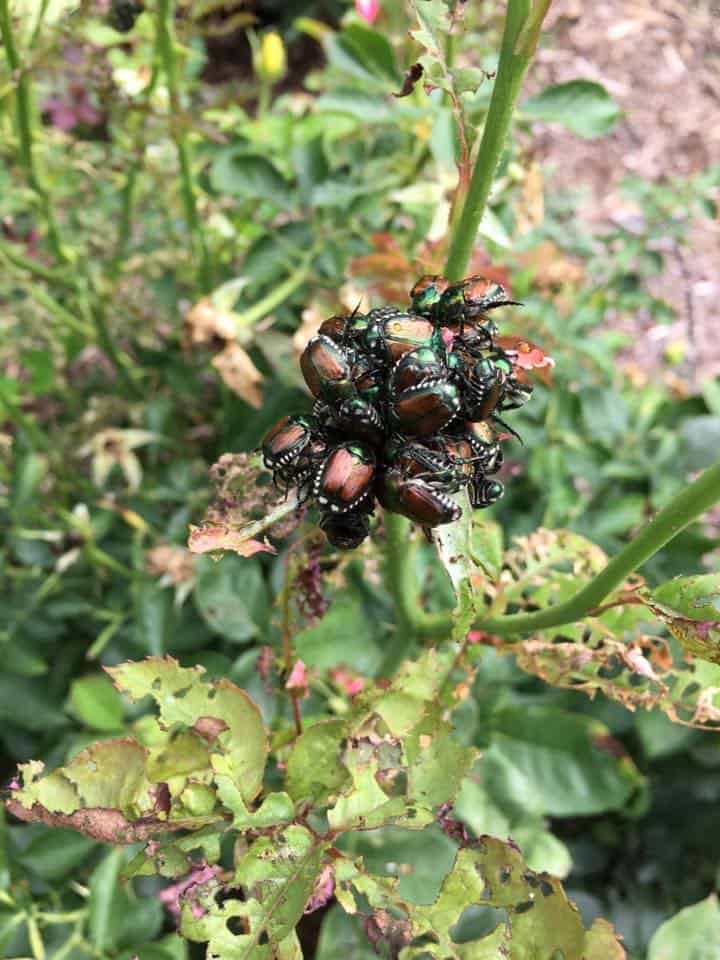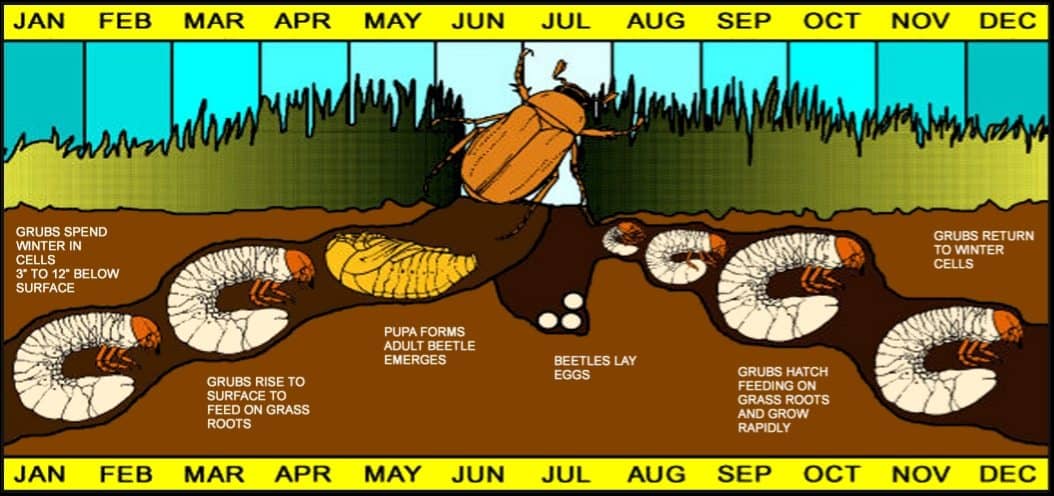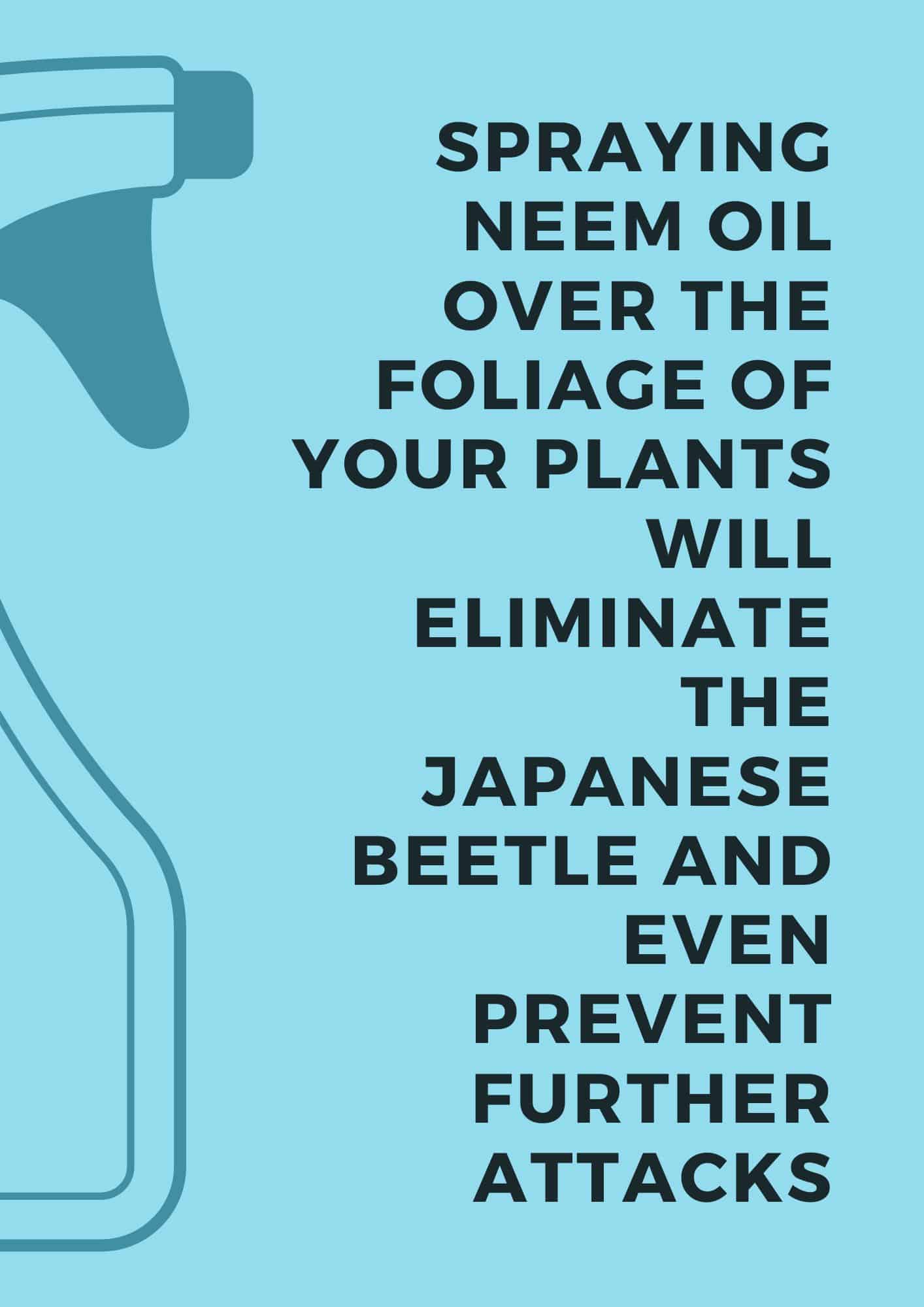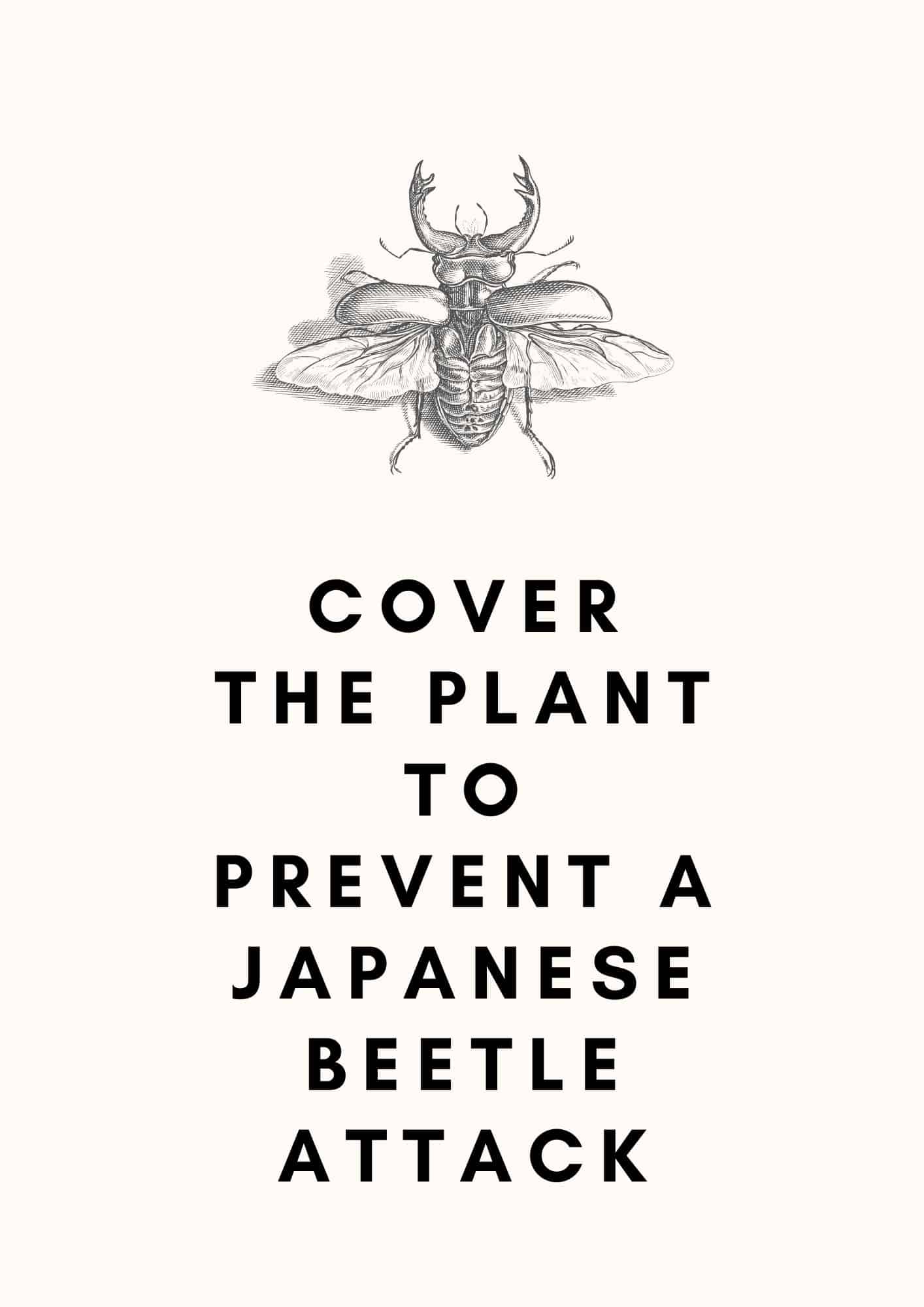Last year, I grew a beautiful Rose in my garden. I had put a lot of hard work into flourishing that flower, but a Japanese beetle infestation ruined it.
Like any other Rose lover, I was devastated by that loss. The need to protect my future plants pushed me to conduct further research on that deadly bug.

After suffering an incurable loss the first time, I successfully warded off any future infestations, and even better, I prevented them altogether.
If it is your first time suffering this fate, don’t worry, you have landed on the right page. So, read on to be an expert on dealing with Japanese beetle infestation.
Table of Contents Show
How to Identify a Japanese Beetle Infestation?
The first and foremost step in treating any pest infestation is identifying what they and their damages to plants look like.
Sometimes people get their plants shredded by pests but cannot identify what caused it. Do not make that mistake with Japanese beetle infestation.
Generally, the Japanese beetle is an oval-shaped insect with a distinct metallic blue-green head and copper-colored wings. They attack the leaves and leave the leaf skeleton behind.

The adult Japanese beetles are about 1/3 or 1/2 inches long, with five white hair patches on the sides and two white hair patches on the tip of their abdomen.
Similarly, the larvae (grubs) are c-shaped, 1/8 to 1 inch long, white to cream color, and have a distinct tan-colored head. They are mostly found in the soil.
Adult Japanese beetles are voracious feeders with a lifespan of 30 to 45 days.
Furthermore, the female Japanese beetle spends two to three weeks burrowing a few inches into the ground cover to lay up to 60 eggs during their lifetime, which hatches in the summer.
These insects can be found in your yards, gardens, patios, and even inside your home, munching on potted plants.
Although they have a lower chance of invading your home, indoor potted plants are still at considerable risk.
The Japanese beetles attack your plant and drop their larvae, known as grubs, which then feed on the turfgrass and anything on the base.
If you suspect Japanese beetle infestation on your lawn, you can check for the following signs to confirm the suspicion.
Signs of Adult Japanese Beetle Infestation
- Look at the plant closely, as the adult beetles are easy to spot with your naked eye.
- The leaves will be skeletonized with only the veins remaining.
- Birds and other insect-feeding animals will be frequent in your garden.
- You will see devoured flowers and fruits.

Signs of Grubs Infestation
- The Larvae are creamy, white-colored, C-shaped masses.
- Many female beetles (larger than their male counterparts) are frequently seen in the garden.
- If grubs infest your lawn, you will find them if you lift a patch of grass turf.
- There will be a lot of irregular, brown patches in your garden.
- Grubs feed on roots and suck out essential plant nutrients.
Japanese beetles can attack your lawn when you have least anticipated their attack. So, it will never hurt to be on the lookout.
Why is the Japanese Beetle Harmful?
The Japanese beetle would not be a threat if it did not harm the plant and helped eliminate other small predator insects. No, sorry, they are not ladybugs.
If you do not catch up on the signs early and eliminate the pesky bugs, you might as well bid farewell to your beloved plants.

The Japanese beetle can be harmful in many ways. Let us look at the harm it poses to the plant below.
Damage by Adult Japanese Beetle
- The leaves attacked by the Japanese beetles can turn brown and eventually fall off.
- Younger plants will have stunted growth and can even die.
- If the pests attack the flowers, they will have irregular holes throughout the petals.
- Woody plants can sustain heavy feeding without incurring any long-term damage.
- The production of fruits and vegetables will decrease significantly.
Damage by Japanese Beetle Grubs
- The grasses on your lawn will turn brown due to the inability to take up water.
- Patches of grass will appear rolled up due to the lack of roots.
- Different animals and birds that hunt the grubs will upturn the soil on your lawn.
The best way to deal with the Japanese beetle is to remove them from the plant altogether.
How to Get Rid of Japanese Beetle Infestation?
Seeing your garden full of Japanese beetle-infested plants can be disheartening. You have to witness your hard work go down the drain.
I went through that tragic phase; trust me; I was as clueless as you are now.
The Japanese Beetle infestation can last for about 1 to 2 months. Enough to kill your plant, right?
You can consider yourself lucky; I am here to help you eliminate these pests. Let us look at some measures I tried and got successful.
Commercial Treatment Measures
Follow these commercial treatment measures to eliminate these pesky bugs.
- You can resort to biological treatment methods for the elimination of Adult beetles. A bacteria BTG (Bacillus thuringiensis galleriae) can kill Japanese beetles and grubs without hurting the plant.
- As a versatile commercial measure, Neem oil is an effective method to eliminate Japanese beetles.

- Certain chemical insecticides like Sevin, which contains carbaryl, and Orthene, which has acephate, are effective against the Japanese beetle.
- You can buy Japanese beetle traps like Spectracide and Safer Brand to tap these little runts.
- Parasitic nematodes are very effective against the Japanese beetle grubs.
- Milky Spore and Harris Kill Formula have proven effective against grubs and Japanese beetles.
Natural Treatment Measures
You can also eliminate these pests in your home naturally. Just follow the tips below.
- In the early stages of infestation, you can handpick the adult beetles and discard them.
- Prepare a soap and water solution by mixing a quart of water and a teaspoon of dish soap and spray them on the plant. Add 1 cup of vegetable oil and 1 cup of rubbing alcohol to have added effect.
- Prepare a spray by combining a few ounces of Cedar oil with five gallons of water. Spray the mixture over the plant.
- Crush six or more garlic cloves and add a gallon of boiling water to make a repellent spray. Ensure to spray the mixture underside of the leaves.
- If you have a thin cloth in your home, you can cover your plants to prevent Japanese beetle attacks. However, this is not a long-term solution.

- Prune and maintain the plants regularly to remove the beetles and strip them of their breeding ground.
- If one of your plants is infected, you should not group them with other healthy plants.
- You can plant other plants with Japanese beetle-repelling plants like Garlic, Catnip, Tansy, and Chives.
You might not witness the Japanese beetles during the night as they go to their nests below the ground surface.
Spill diluted chemical formulas over the nest to eliminate them in their sleep. That is so evil, but these bugs deserve that for giving you sleepless nights.
Japanese beetles hate the smell of teaberry oil, wormwood oil, wintergreen, peppermint oil, and gaultheria oil. Use this knowledge to your advantage.
How to Prevent Japanese Beetle Infestation?
As it goes without saying, prevention is better than cure. The same thing applies when it comes to the Japanese beetle.
If you carefully follow the preventive measures and care tips, no beetle will ever get close to your beautiful plants.
- The most effective way to control the Japanese beetles is by companion planting garlic, tansy, catnip, onions, and other plants that these bugs hate.
- If your garden has too much moisture, it becomes more prone to Japanese beetle attacks. So, avoid overwatering the plant.
- Take action as soon as you see grubs and prevent them from being adult Japanese beetles.
- Attracting parasitic wasps (Tiphia vernalis or T. popilliavora) and flies to your garden can be beneficial.
- Apply pesticides containing Pyrethroids and Chlorantraniliprole every 2 to 4 weeks to control the infestation.
- Cover your plants with row covers to keep Japanese beetles away.
- Leave dead Japanese beetle bodies out to deter or confuse live beetles from infesting the plant.
- Keep the plants that attract Japanese beetles away from your plants to keep them safe.
- Get your gardening boots on and be on the lookout for the insect eggs to prevent the damage before it goes extreme.
Japanese beetle may not kill your firm plants, but they will surely leave your plants in a sorry state.
From Editorial Team
Just like The Beatles said, “Let it be,” these beetles would also prefer if you let them be.
But you know what is good for your plant and your garden as a whole. Japanese beetles are no rockstars; you must panic as soon as you see them.
I hope you will not have to witness them in your garden.
Good luck!


